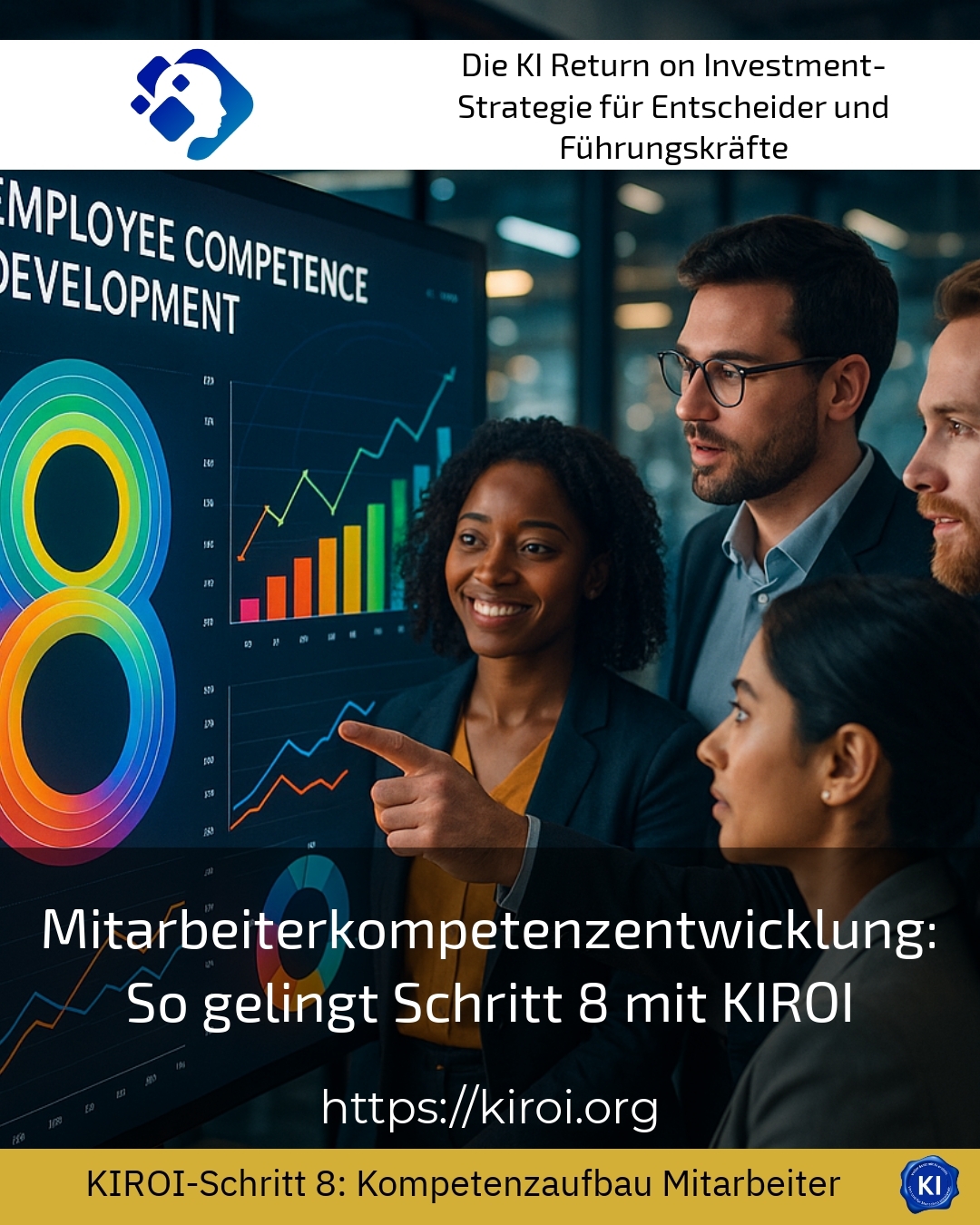Employee skills development is a key success factor for companies that want to remain fit for the future. Step 8 in the skills development process in particular, which involves systematic support through coaching and reflection, helps employees to develop their potential in a targeted manner. With KIROI as an innovative companion, this step is particularly effective.
Employee skills development: Why step 8 plays a key role
The targeted development of employee competences begins with the analysis and identification of relevant skills. However, only consistent support in their implementation ensures sustainable success. Step 8 therefore focusses on practical coaching that supports employees in intensifying their strengths and overcoming challenges. KIROI offers innovative methods to personalise this process and make it effective.
In industry, for example, managers often report that coaching helps them to take on new responsibilities. The automotive industry uses KIROI to support engineers in complex project tasks with targeted expert feedback. KIROI also helps employees in the service sector, such as banking, to develop their social and methodological skills in a practical way.
Employee skills development through coaching with KIROI: practical examples from various industries
Successful skills development is based on a combination of theory and individualised practical support. KIROI integrates both traditional forms of coaching and innovative digital tools to accompany the learning process.
In the IT sector, teams use KIROI coaching to anchor agile methods more firmly in everyday project work. Regular feedback sessions and structured reflection methods help employees to systematically improve their methodological expertise.
In the healthcare sector, integrative coaching with KIROI favours the development of social skills. Care teams report that conflicts can be recognised at an early stage and resolved more effectively through targeted support.
In the production environment, KIROI supports employees in developing their expertise, for example through case studies that depict real-life problem situations. This motivates and makes skills development tangible.
BEST PRACTICE with one customer (name hidden due to NDA contract) and then the example in at least 50 words. A large mechanical engineering company used KIROI Step 8 to support technical employees during a transformation project. Through targeted coaching, employees were able to deepen their knowledge of new technologies in a self-organised way and improve their teamwork at the same time. The continuous reflection helped to recognise obstacles early on and develop solutions, which made the project goals achievable more quickly.
Specific tips for the successful application of step 8 in employee competence development
Various impulses are helpful for the successful development of employee competences with KIROI Step 8:
- Promote an open feedback culture that supports regular feedback and self-reflection.
- Use practical methods such as case studies or project support to embed learning content.
- Rely on customised coaching that meets employees where they are.
- Integrate digital tools from KIROI to make coaching flexible and sustainable.
- Create space for peer learning and collegial counselling within the teams.
For example, sales employees can develop a better understanding of customer expectations through regular coaching sessions and respond to objections in a more targeted manner. In technical support, teams benefit from practical exercises and immediate feedback. And in the creative sector, reflection sessions make it possible to integrate new ideas and strengthen individual skills at the same time.
Why employee competence development with KIROI Step 8 makes the difference
The key to success lies in the combination of personal support and structured methods. Step 8 enables employees to consciously organise their learning processes and implement them sustainably. KIROI supports this step with practical coaching impulses that respond to current challenges and individual learning needs.
As a result, employee skills development is not only perceived as a compulsory task, but also as an opportunity for personal and professional development. Many companies report how this increases employee satisfaction and strengthens performance at the same time.
My analysis
Employee skills development requires more than just knowledge transfer. Step 8, active support via coaching with KIROI, creates decisive impulses to make learning effective and sustainable. The methods and examples tried and tested in numerous industries show how customised coaching motivates and empowers employees. The deliberate use of reflection and practical relevance facilitates transfer to the working environment. Companies that consciously take this step benefit from a more committed, more competent workforce and a stronger competitive edge.
Further links from the text above:
Skills development: definition + successful examples
Successful skills development: 9 tips and 3 methods
Employee skills development: KIROI step 8 for decision-makers
For more information and if you have any questions, please contact Contact us or read more blog posts on the topic Artificial intelligence here.















